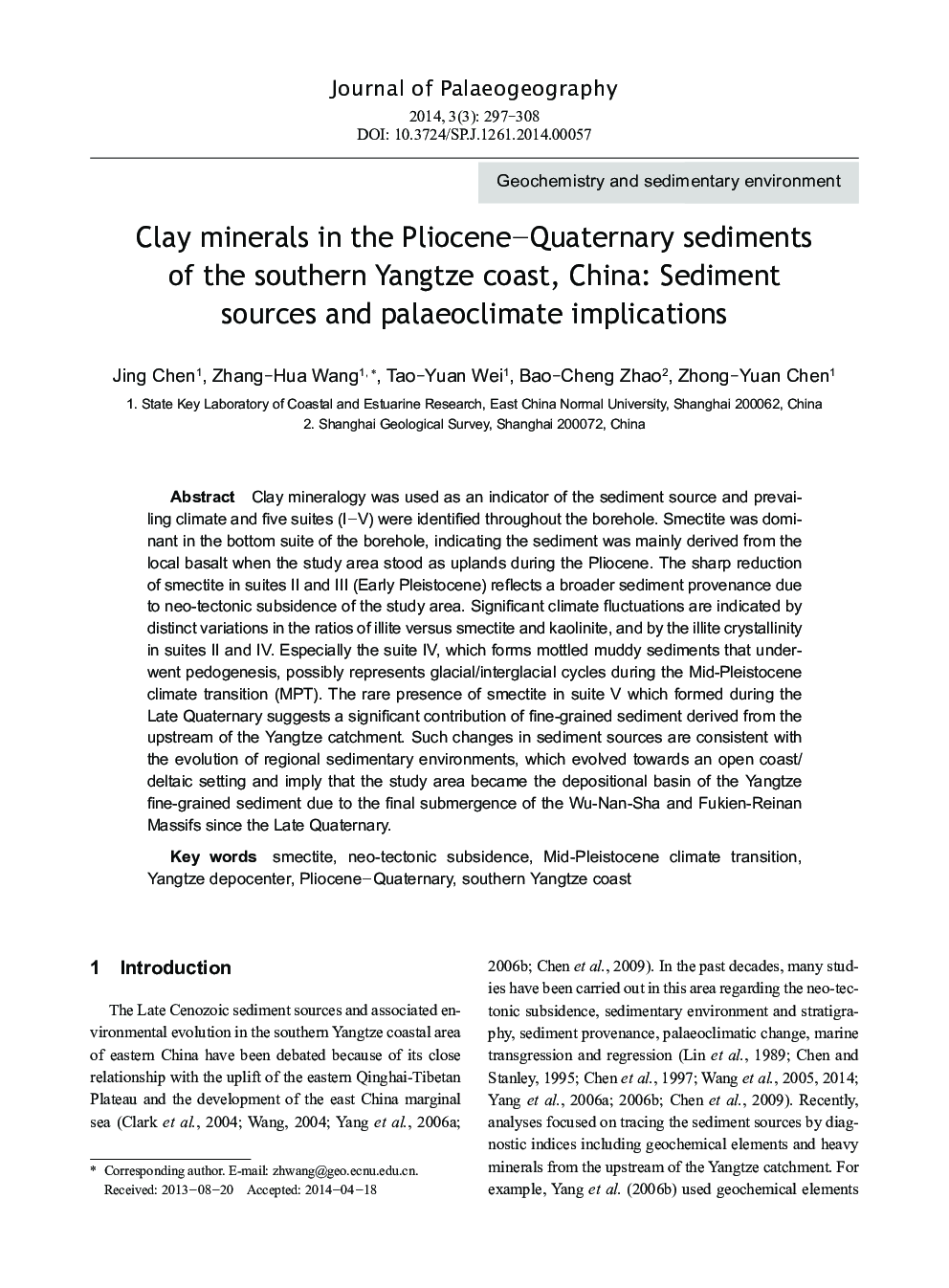| Article ID | Journal | Published Year | Pages | File Type |
|---|---|---|---|---|
| 4581022 | Journal of Palaeogeography | 2014 | 12 Pages |
Clay mineralogy was used as an indicator of the sediment source and prevailing climate and five suites (I–V) were identified throughout the borehole. Smectite was dominant in the bottom suite of the borehole, indicating the sediment was mainly derived from the local basalt when the study area stood as uplands during the Pliocene. The sharp reduction of smectite in suites II and III (Early Pleistocene) reflects a broader sediment provenance due to neo-tectonic subsidence of the study area. Significant climate fluctuations are indicated by distinct variations in the ratios of illite versus smectite and kaolinite, and by the illite crystallinity in suites II and IV. Especially the suite IV, which forms mottled muddy sediments that underwent pedogenesis, possibly represents glacial/interglacial cycles during the Mid-Pleistocene climate transition (MPT). The rare presence of smectite in suite V which formed during the Late Quaternary suggests a significant contribution of fine-grained sediment derived from the upstream of the Yangtze catchment. Such changes in sediment sources are consistent with the evolution of regional sedimentary environments, which evolved towards an open coast/deltaic setting and imply that the study area became the depositional basin of the Yangtze fine-grained sediment due to the final submergence of the Wu-Nan-Sha and Fukien-Reinan Massifs since the Late Quaternary.
